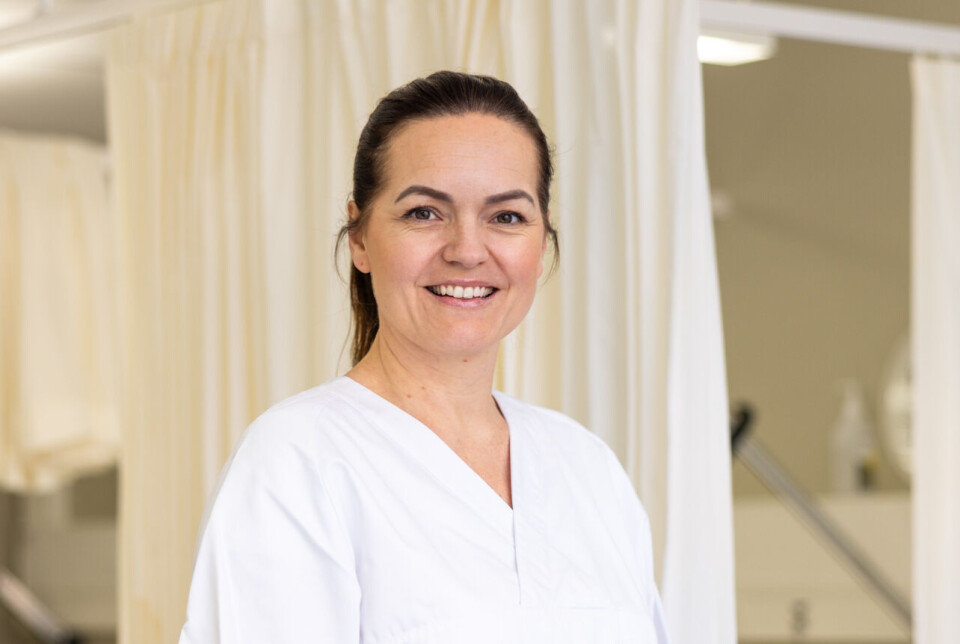THIS CONTENT IS BROUGHT TO YOU BY THE University of Agder - read more
How nursing students can get a better start in the profession
Overwhelming, demanding – yet still a rewarding experience? A new study points to several measures that can make the first practice placement for student nurses safer and more educational.

“What surprised me the most was the marked difference in how students experienced the follow-up during their practice,” says researcher Ingrid Espegren Dalsmo at the University of Agder.
For several years, she has studied nursing students at 11 different nursing homes during their first practice period. She has done this through observations, interviews, and group interviews.
In Norway, nursing students spend half of their study time in practice, totaling 2,300 hours. This is the part of their training where students participate in practical work at hospitals, nursing homes, and similar settings.
“The practice component is a very important learning arena. Research shows that the first experiences impact future career choices. That's why we must create good learning environments from the start, as it contributes to a better education and encourages more people to stay in the profession,” she says.
Changes in elderly care – a shock for many
Nursing homes are traditionally the first practice site. For many students, this is also their very first encounter with both patients and the nursing profession.

“There's a growing need for nurses caring for older people. Nursing homes have also changed a lot in recent decades: Patients are sicker, live longer, and require advanced nursing care,” says Dalsmo.
She has a background as a nurse, practice supervisor, and lecturer in the nursing programme.
For many students, it can be a shock.
“They encounter seriously ill patients, they're given responsibility, and are expected to learn and develop at the same time. It’s not just about providing care, it’s also about making complex clinical assessments,” she says.
Varying levels of feedback and room for reflection
During their practice, student nurses study in the same way they do at university. Various learning activities, written and oral assignments, and assessments help ensure that they achieve learning outcomes.
But unlike at university, where they are the primary focus as students, patients come first in the nursing home.
“Naturally, they feel uncertain in this setting. ‘Am I doing it right?’, ‘What should I do now?’,” says Dalsmo.
There was great variation in the feedback students received during their practice.
“How the students were met and supported made a big difference. There's so much going on, and it's easy to forget that they are not employees. They're there to learn, just like at university,” she says.
Make the most of the collaboration with supervisor and lecturer
Students are paired with a nurse who is also their practice supervisor. The lecturer from their programme visits occasionally.
The so-called tripartite meetings, where the student meets both the practice supervisor and the lecturer, are usually the only setting where all three parties meet at the same time.
“It's crucial to make the most of these meetings. Here, students reflect on what they have learned. Nevertheless, there's great variation in how these meetings are conducted,” says Dalsmo.
Some meetings focused mostly on formalities and less on the students' nursing experiences at the nursing home.
“The first meeting is particularly important, because it sets the foundation for the journey ahead. If you take time to get to know the student, such as what they bring with them and who they are, you create a safe space for dialogue and the learning process going forward,” she says.
Emotional support is also needed
By observing the students, Dalsmo discovered how important it is that they also receive emotional support.
“Many encounter death and serious illness for the first time, and dealing with their own emotions is part of the learning process entering the nursing profession,” she says.
Practice supervisors and lecturers play a key role in helping students reflect on their experiences so that they do not become overwhelmed.
“Learning emotion regulation techniques can also help prevent dropouts – and not scare students away. It's not about ‘wrapping them in cotton wool’ and serving everything on a silver platter, but about guiding them through in a positive way. Here, practice supervisors also serve as important role models,” she believes.
All involved must participate actively in the students’ learning
Some students and practice supervisors tested a digital learning tool. This tool is used to prepare for practice and to support learning and reflection during and afterward.
Dalsmo interviewed 23 students about their use of this tool. There was great variation in how and to what extent it was used.
“One reason for the variation is that both the lecturer and practice supervisor did not use it as much. Students want them to explore it together and use it actively,” she says.
The learning tool is designed to support the students' learning, making it very helpful when everyone involved participates actively.
“But it also depends on the practice supervisor's available time, as well as the lecturer, who has to follow up on multiple students at the same time,” she points out.
New opportunities with a university nursing home
Dalsmo is currently involved in developing Norway's first university nursing home. It is a collaborative effort between the University of Agder, Agder Vocational College, and Grimstad municipality.
The actual building is expected to be completed in 2030. The plan is to build robust research environments and connect them more closely to solve challenges in elderly care.
This knowledge could be of great importance in the coming years. Dalsmo sees good opportunities to rethink practical studies through the university nursing home.
“Here, we can organise learning in innovative ways and conduct skills development for students and employees alike,” she says.
Dalsmo believes action is also needed at the political level:
“There should be national standards for practical studies to ensure student learning and high-quality education.”
Reference:
Dalsmo, I.E. Supporting first-year nursing students’ learning experiences in nursing home placement – a qualitative study, Doctoral thesis at the University of Agder, 2025.
———
Read the Norwegian version of this article on forskning.no

This content is paid for and presented by the University of Agder
This content is created by the University of Agder's communication staff, who use this platform to communicate science and share results from research with the public. The University of Agder is one of more than 80 owners of ScienceNorway.no. Read more here.




































